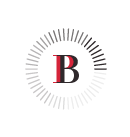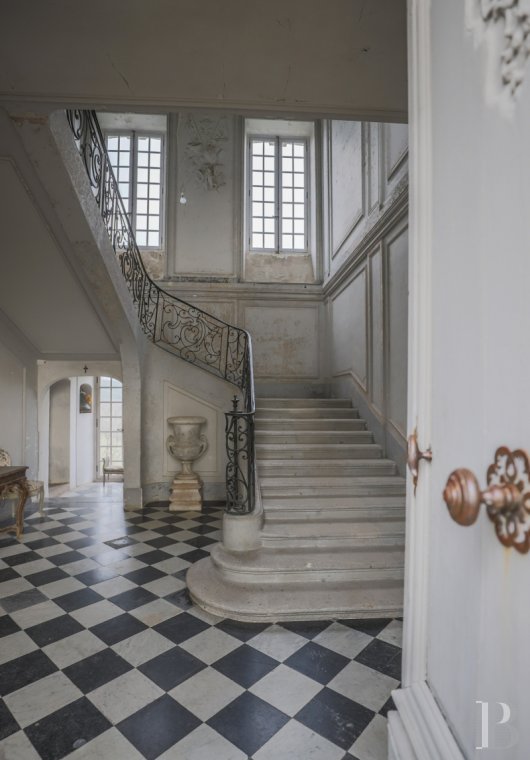Add to favorites
Log in to your personal space

This site never fails to captivate newcomers. The Romans themselves had made an oppidum of it before a medieval fortress was built here. As for the famous Marshal de Villars, peer of France who was elevated to the rank of general marshal of the king's camps and armies by Louis XV, he too had considered the strategic and grandiose location when deciding to build the chateau that still stands here today. Written across the property is a grand history which stretches to the very foundations of the walls that rise up on a rocky peak. More recently, the story of an equally uplifting renaissance took centre stage. Threatened with slowly falling into disrepair, the Château de la Roche inspired great passion in those who now guide its destiny and finally regained its splendour. More than a magnificent setting, this vibrant place of history will no doubt bring ambitious artistic projects to life.
Even though the chateau is a family home, taking it over was a real challenge that we took on at the age of 23 and 25. The chateau was a sleeping beauty hidden in its park, despite such a dominant position, and was just waiting to be restored. For twenty years, our mission and life project has been to restore this place to its former splendour. With such beauty and architecture, no site could be more deserving of our attentions. Still enchanted by the surrounding nature, far from any eyesores or sound pollution, we are forever in awe of this region that is so popular with lovers of nature and heritage.

The current chateau was built on a rock promontory in the 18th century and adds something truly special to this Morvan landscape. It overlooks a green valley made up of groves and woodlands which leads to Bibracte, the former Aeduan capital on Mont Beuvray. Along the winding roads that descend from the Morvan mountains, the chateau blends into the landscape at the top of an imposing granite rock. It is known as the "rock at the end of the world" and the cross on Calvary, which stands at the summit, overlooks the valley below. The chateau was built by the Marshal de Villars on the ruins of a medieval castle. The wall of the north facade was once the curtain wall to which windows were added during the construction of the current chateau. To the south, a perimeter wall flanked by a 13th century tower and moats still remains from the former impenetrable fortress. The 18th century chateau now stands on a terrace in the middle of the park and gardens. The Marshal de Villars commissioned the construction of a large, rectangular-shaped central body flanked by rectangular pavilions projecting from the two facades at the eastern and western ends. The roof, with dormers on the south facade, is covered with flat Burgundy tiles. A horseshoe staircase with an elegant wrought-iron banister leads into the chateau through a molded wooden door framed by two pilasters. The vestibule opens onto a large, rectilinear staircase with a wrought iron banister. It is decorated with rococo style stucco wall panels and medallions which represent the four seasons in the cornices. At the centre, between two north-facing windows, a collection of military trophies pay tribute to the Marshal de Villars' career.
In ancient times, the site overlooking the Roman road linking Bibracte (capital of the Aedui) to the Loire Valley was occupied by an oppidum used by the Roman army. Its strategic position allowed the surroundings to be monitored and access to the oppidum of Bibracte at the top of Mont Beuvray was protected. In the Middle Ages, the feudal castle was the seat of a powerful barony which allegedly minted coins. It was an estate in freehold and rival to the Count of Burgundy and the Duke of Nevers. The barony of Larochemillay remained in the Châtillon family for eight generations before passing through marriage to several noble families which each played an important part in France's history: the Bourbons, the Montaigus, the Montmorencys, and the Rouxellés. In 1719, the Marshal de Villars (marshal of Louis XIV) bought the castle from Henri de Rouxellé, who was also marquess of Saché and Gizeux in Touraine, and began construction on the foundations of the medieval fortress. In 1736, the marshal's widow sold the castle to Jacques Louis de La Ferté Meun and it has since been in the same family for 284 years.

Thanks to the preserved environment on a registered natural site, the property exudes an inspiring sense of calm and serenity. The architecture of the 18th century chateau, similar to the buildings of large towns from this period, is an unexpected sight in the heart of the Morvan park and recalls the famous Marshal de Villars' presence. The well-staged yet natural setting is truly exceptional. From atop a rocky outcrop, the chateau offers views that stretch for miles across the wooded countryside and a breathtaking view of Mont Beuvray, a Grande Site de France and an archaeological site of Bibracte. The stuccowork decorating the interiors provides an authentic setting for films or photoshoots. The stables from the same period still feature wooden rooms and a cobbled path. The surrounding wall and the interior of the 13th century medieval tower embody the power that the barony drew when faced with the Dukes of Burgundy and are an ideal location for a film set in the Middle Ages. The multi-level gardens in the park provide inspiring views of the valley and woodlands at the foot of the rock.
The lakeside cabins at the Château d’Ettevaux or the Château de Magny en Morvan for a wellness retreat. The contemporary museum of Bibracte, built by architect Pierre-Louis Faluci on Mont Beuvray, showcases the Gallo-Roman history drawn from a large archaeological excavation site. The town of Autun is a cultural gem featuring Gallo-Roman remains and a cathedral surrounded by a historic district. For restaurants in Autun we would recommend Don Cabillaud, an excellent seafood restaurant; Comptoir Cuisine; and Le lieu-dit-vin which is a wine bar in the upper districts at the foot of the cathedral. Closer to home are L'Auberge de Poil; Au Cochon Ventru, a lakeside restaurant; and Aux Berges de Thil which selects local products and Burgundy wines for refined cuisine.

Part of the chateau's interiors (a vestibule and dining room with a wrought iron banister and 17th century stuccowork, bedrooms with wood panelling and painted ceilings, and vaulted cellars), the 18th century stables, the 13th century medieval tower and the entire park are available for filming and photoshoots. On the hill on the other side of the valley, the ruins of an old fortified castle are also available for filming. There is a large space for parking at the entrance to the property and a large communal gîte which can be used to accommodate films crews. Further accommodation is located nearby and delivery of catering can be arranged.
ref 872646

 A link to enter a new password has been sent to you by email.
A link to enter a new password has been sent to you by email.
By continuing your navigation, you accept the use of cookies to offer you services and offers adapted to your centers of interest and to measure the frequentation of our services. Learn more